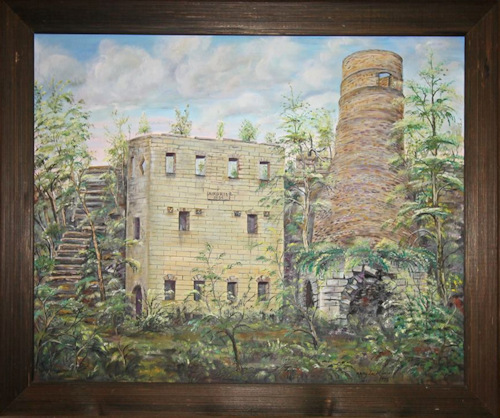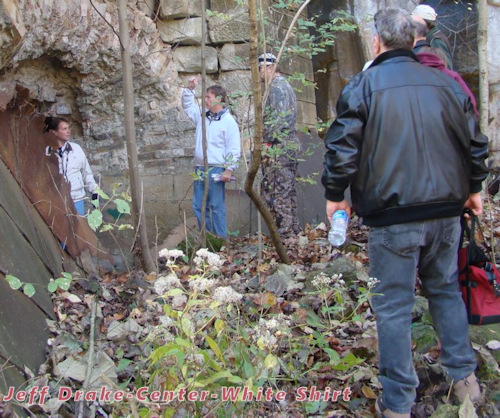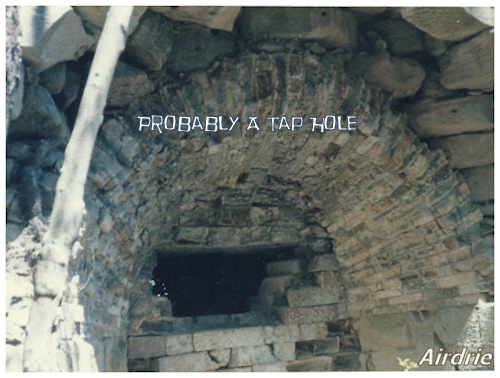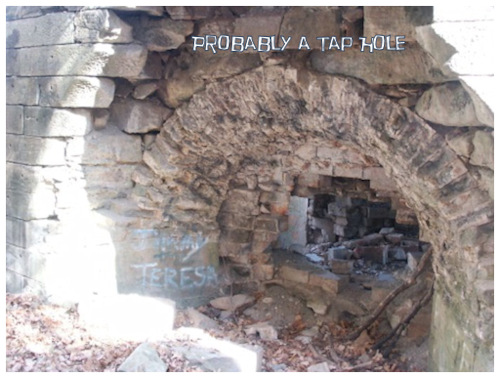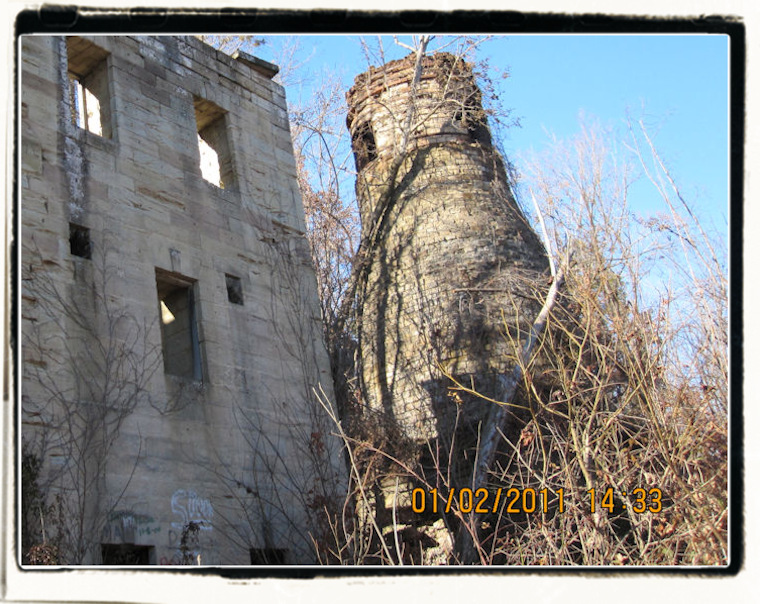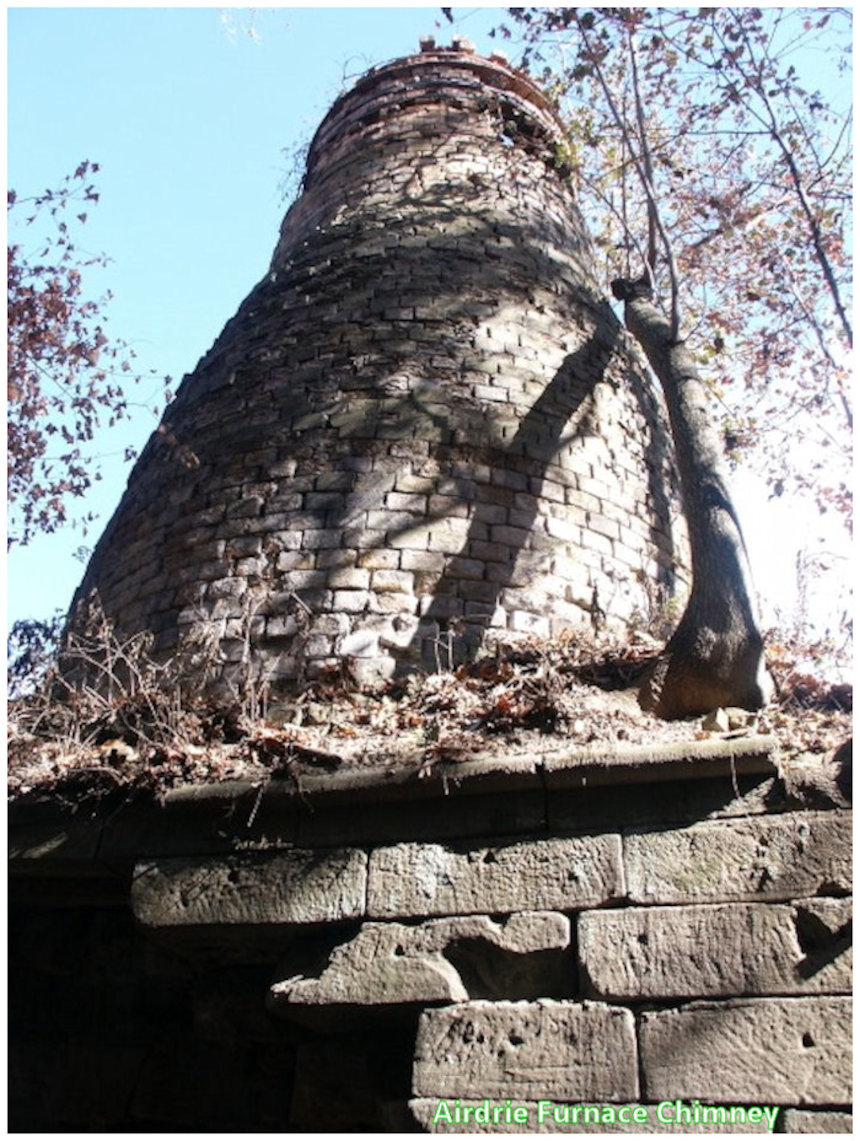A Blast Furnace.
Some forms of Blast Furnaces have been
in service since the first century. Chinese blast furnaces in the first century
were crude, but the end results of having malleable iron from iron ore made living
more bearable. Cast iron has been discovered in China that predates Christ, thus
some form of a furnace existed even before Christ walked upon this Earth. While the
Chinese were busy making iron, it would be several hundred years later before any
type of iron making would be present in Europe. By the fifteenth century, blast
furnaces using charcoal as a fuel, were producing some iron in Europe. A hotter
heat source was discovered in Europe in the first part of the eighteenth century and
coke became the norm for firing blast furnaces. In the middle of the nineteenth
century heated air was being injected in to the furnace to produce higher heat and
a more complete combustion. This resulted in a more efficient chemical reaction
and a better product of iron.
The typical blast furnace in the mid nineteenth century in its' simplest form was
a cylinder stack built of masonry resting on a square foundation built of masonry
and lined with sandstone or soapstone. This liner was the forerunner of refractory
brick. The cylinder stack part was some twenty to thirty feet high resting on a
base that was twenty feet or so high. Iron ore, charcoal, and limestone were fed
into the furnace from a platform on top by workers that transported these materials
from a base station to the top of the stack. Air for more complete combustion was
pumped into the furnace near the bottom by means of an opening that was made of cast
iron or brass. Air was supplied at a few pounds per square inch of pressure by some
form of a blowing machine that was powered mostly by a water wheel or a steam engine.
Initial blowing machines were bellows pumps using animal skins as the bellows. Later,
a much more reliable bellows pump made of metal was used and this was soon superseded
by a cast iron air compressor.
A blast furnace is more than just a place to heat the iron ore to a molten stage and
then draw off the liquid results. Once a furnace is "Fired" and comes up to temperature,
the iron ore is introduced to the top of the stack along with the fuel and limestone.
As this mixture is heating while falling from the top, a chemical process is taking
place. The combustion of the fuel, as it is mixed with the air, produces heat and
carbon monoxide gas. Chemically the iron ore mixed with the carbon monoxide produces
iron and carbon dioxide gas. The carbon dioxide gas exists the stack and the iron
and the limestone combine. At this point, the iron is not pure and limestone is the
third essential raw material in the smelting process for another chemical reaction.
Now the limestone becomes burnt lime and impurities and combined with the molten iron
falls into the large holding pit as iron and slag. In the pit, the fluid slag floats
to the top of the molten iron and is drawn off as slag. The molten iron, on the bottom,
is tapped and flows into containers called "Pigs", thus the new iron was called "Pig
Iron". Once cooled the pig iron is now ready to be used and the cooled slag is a
by product that can be used in construction work such as aggregate for concrete and
other road building projects.
Thanks for looking.
See you...
jerry
God Bless America!
|

